Martin Luther King Jr. Day is observed on the third Monday of January each year. He made a great impact on the Civil Rights movement in St. Augustine. In the Spring of 1964, the Ancient City would be the final stage of what would be called “The Great Moral Drama,” which led to the landmark passage of the Civil Rights Act of 1964.
Read on to learn more about Dr. King’s time here, plus a few notable sites you can visit on your next trip to St. Augustine.
While St. Augustine was gearing up for its 400th anniversary, tensions rose as racial segregation came to the forefront and began to make headlines.
National media covered stories of the Ku Klux Klan attacking non-violent activists who were beaten and arrested by local law enforcement. Citizens feared for their lives while the homes of those involved were shot up and firebombed. Following the brutality at Klan rallies and wrongful convictions of assault, activists requested the help of the Southern Christian Leadership Conference (SCLC) to organize sit-ins and peaceful protests.
Dr. King arrived in St. Augustine on May 18, 1964, and began working with local activists, like Dr. Robert B. Hayling, to lead the charge to end segregation.
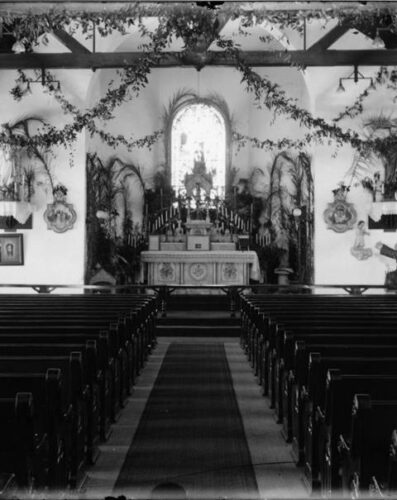
He used the rectory at St. Benedict the Moor Church — the city’s first parish to serve African-American Catholics — in the Lincolnville neighborhood to plan marches and demonstrations that would play a significant role in the passage of Civil Rights legislation.
Listed on the National Register of Historic Places, the school building, church, and rectory can be seen at 82 Martin Luther King Avenue.
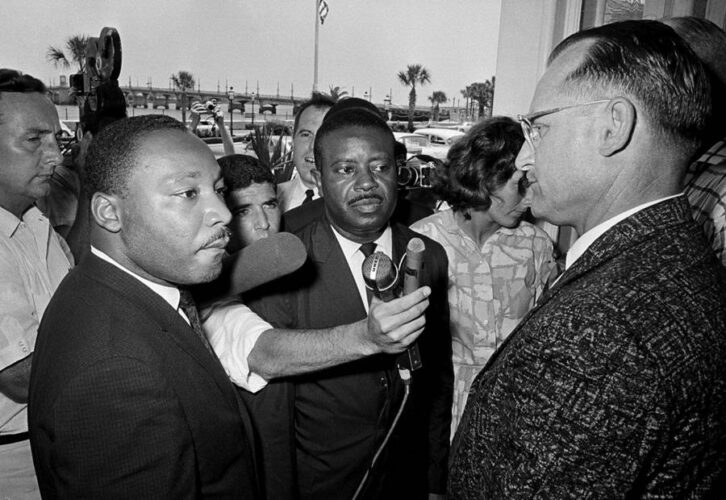
On June 12, 1964, Dr. King was arrested — his only arrest in Florida — on the steps of the Monson Motor Lodge when he asked to be served at the whites-only hotel restaurant. He was taken to the Old St. Johns County Jail where he wrote to Rabbi Israel Dresner of New Jersey, encouraging rabbis to assist in the St. Augustine movement. On June 18th, two crucial moments in Civil Rights history would unfold at the hotel.
After the refusal of service in the Monson Motor Lodge restaurant, sixteen rabbis prayed at the hotel’s entrance. Manager James Brock reportedly pushed the kneeling rabbis toward police to be arrested for trespassing, breach of peace, and conspiracy. This resulted in the largest mass arrest of rabbis in US history to this day.
Seven minutes later, the infamous incident of Brock pouring two gallons of muriatic acid into the pool with a small group of protestors would occur. The image of horrified swimmers would make global headlines, influencing lawmakers to vote in favor of the Civil Rights Act of 1964.
While beaches were legally desegregated, Florida’s public beaches were still mostly off-limits to Black residents and visitors. Wade-ins began on local beaches on June 17, but one of the largest and most violent demonstrations took place at St. Augustine Beach on June 25, 1964.
The Miami News reported hundreds of white segregationists “screaming and flailing” at African Americans in the “city’s worst outbreak of racial violence.”
White residents forced many of the demonstrators into the water. At least 45 injuries and 15 hospitalizations were reported with some nearly drowned. Police officers stormed the water while wielding batons, dragged Black protestors from the water, and arrested dozens.
Images of fully-uniformed Florida Highway Patrol officers breaking up the riot in the water are some of the most circulated of the entire St. Augustine Movement.
All of this unfolded in front of the St. Augustine Beach Hotel which was added to the National Register of Historic Places on January 11, 2022, for its national importance as part of the St. Augustine Civil Rights Campaign. Today, the St. Johns Cultural Council operates it as a Cultural Arts Center that includes The Dance Company and the Art Studio.
Wade-in protests continued until July 1, 1964, the day before President Lyndon B. Johnson signed the Civil Rights Act into law on July 2, 1964.
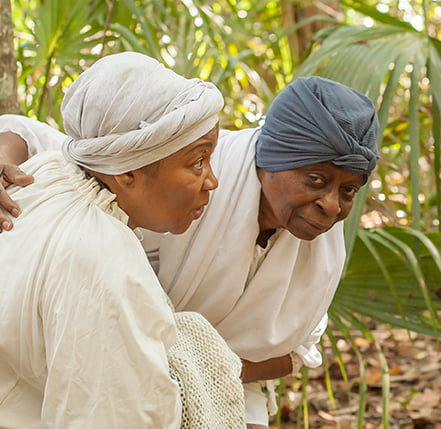
Unique, immersive, interactive event reenacting the perilous flight of Africans who are escaping enslavement on British plantations and seeking freedom in St. Augustine, circa 1738. Reenactment unfolds on the actual historic site.

The Fort Mose Jazz & Blues Series will return to Fort Mose Historic State Park, the site of the first legally sanctioned free African settlement in what is now the United States, from February 8-17, 2023. The third installment of the series will comprise five unforgettable performances by some of the most recognized jazz, blues, R&B, and soul artists in the industry.
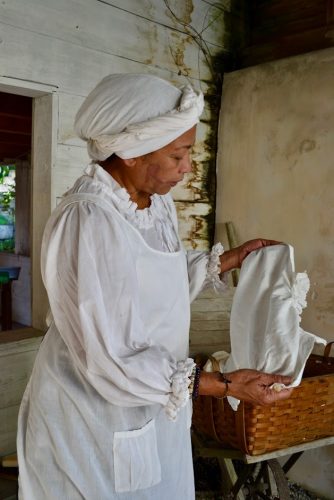
Step into a 225-year-old boarding house and experience the stories of the people that lived within it. This series of interpretive Black History tours features actors who portray several characters from St. Augustine’s past, like Louisa Williams, a previously enslaved woman who was freed by Union troops in St. Augustine in 1862.
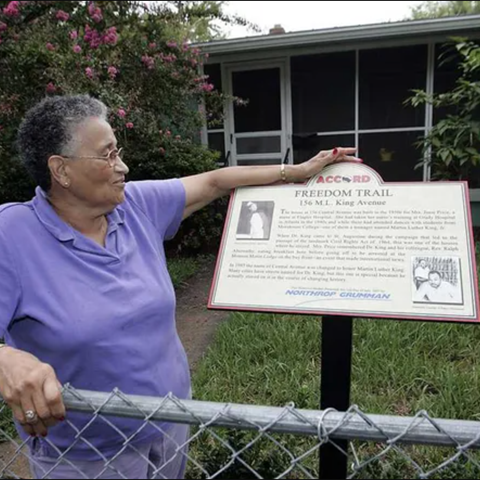
Take a free, self-guided tour of the ACCORD Freedom Trail, covering 31 historic sites, by picking up a brochure and map at the St. Augustine Visitor Information Center on San Marco Avenue. Dial 904-335-3002 to take advantage of the free audio tour, available 24/7.
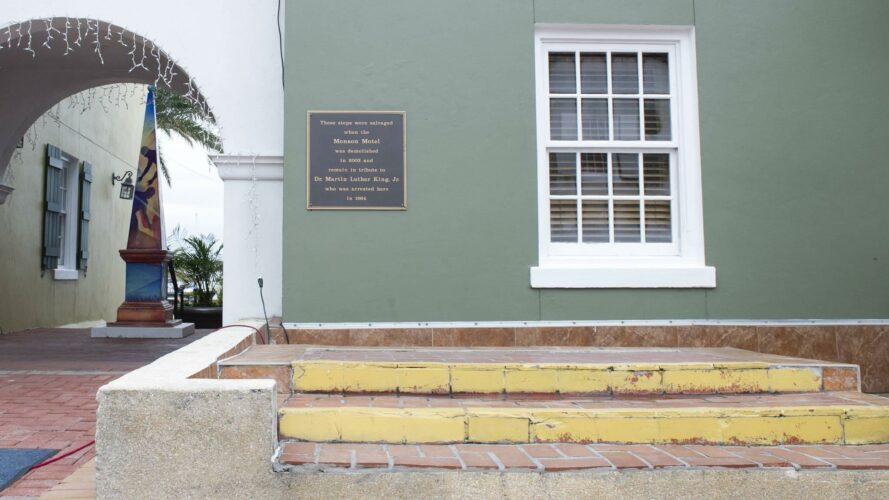
On June 12, 1964, Dr. Martin Luther King Jr. was arrested on the steps of the Monson Motor Lodge after requesting service at the whites-only hotel restaurant.
Days later, James Brock poured acid into a pool of activists protesting segregation policies. This event created one of the most prominent images of the movement and led to the passing of the Civil Rights Act on June 19.
The motel was demolished in 2003, but you can find the preserved steps where Dr. King was arrested at the present-day Hilton Hotel on the St. Augustine Bayfront.
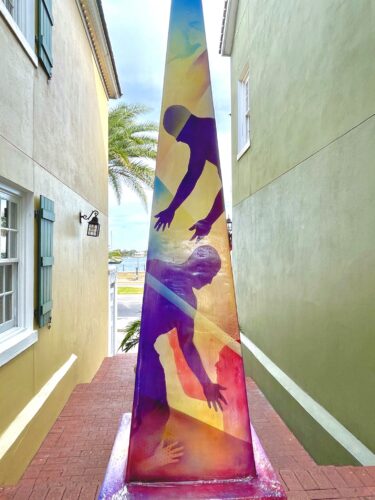
Near this site once stood the infamous Monson Travelodge where, in June of 1964, a group of civil rights activists attempted to integrate the “Whites Only” motel swimming pool. Motel management responded to the demonstrators by pouring muriatic acid into the pool causing great pandemonium.
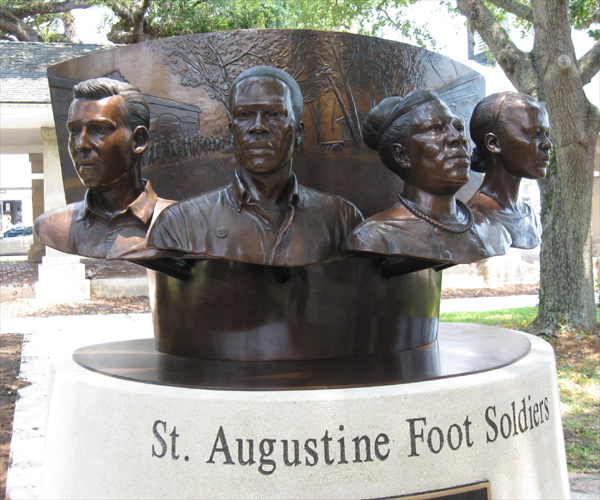
Located near the southeast corner of the plaza is the St. Augustine Foot Soldiers Monument that honors the men and women who engaged in various forms of peaceful protest to advance civil rights contributing to the passage of the Civil Rights Act of 1964.
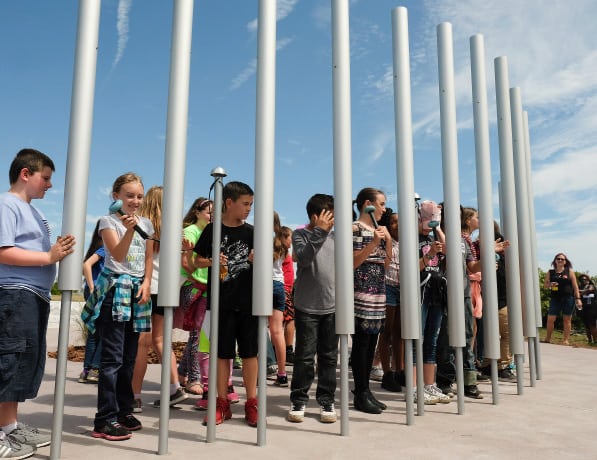
This interactive and multi-media art initiative located in Freedom Park interpretively pays tribute to our city’s Civil Rights history and the roles freedom, human rights, democracy, tolerance, civility, and compassion have played in creating the narrative.
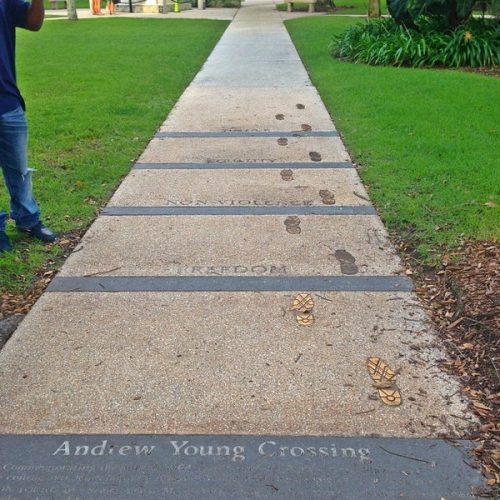
June 9, 1964, Civil Rights activist and leader, Andrew Young led a march from Lincolnville to the Plaza de la Constitución where they met violent opposition. Despite being struck down several times, he continued to stand up and walk, staying true to Dr. King’s non-violent strategy. The spot has been memorialized with bronze footsteps and quotes from Young.